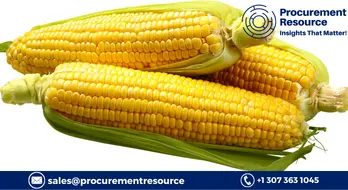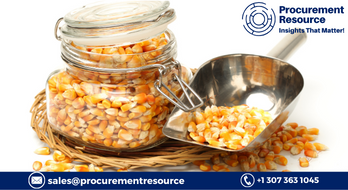Corn Futures Rally 5% as USDA Cuts Stocks Forecast to 3-Year Low; Prices Lag Historical Trends

Chicago corn futures have climbed nearly 5% in April, overcoming market headwinds tied to geopolitical uncertainties affecting US trade relations. The rally comes on the back of a revised supply and demand outlook from the US Department of Agriculture (USDA), which lowered its 2024–25 corn ending stocks estimate to 1.465 billion bushels. This figure is down from 1.54 billion bushels in March and significantly below last May’s projection of 2.1 billion.
The updated forecast reflects stronger-than-expected demand, particularly from export markets. The US stocks-to-use (SU) ratio for the 2024–25 marketing year now stands at 9.6%, marking a three-year low and down from 11.8% a year earlier.
Despite these tighter fundamentals, CBOT May corn has averaged USD 4.66 per bushel so far this month. Historically, similar SU ratios have coincided with significantly higher prices. In April 2022 and 2023, SU ratios were nearly identical—9.6% and 9.7%—yet corn traded at USD 7.55 and USD 6.51, respectively. Adjusted for inflation, those figures equate to USD 8.40 and USD 6.90 in current terms.
USDA's April SU projections have only fallen in the 9% range a few times in the last two decades. In those years, corn futures consistently traded above USD 5 per bushel in early April.
Compared to the running average of USD 4.66, this year’s pricing appears lower than historical trends would suggest.
The current SU level is also below the recent five-year average of 10.7% and the 10-year average of 12.5%, pointing to relatively tighter conditions.
The USDA increased its corn export estimate for 2024–25 by 100 million bushels to 2.55 billion—the second-highest on record, following 2020–21. That earlier surge was driven by China, but this year’s numbers reflect demand from other markets.
As of April 3, exporters had committed 85% of USDA’s annual target, slightly above the average pace. This momentum could support further increases in full-year export volumes.
Read More About Corn Production Cost Reports - Request Free Sample Copy in PDF
Still, several variables could limit additional price strength. These include US plans for expanded corn acreage in the 2025 season, bearish sentiment in soybean and wheat markets, and a potentially strong South American harvest later in the year. Tensions in trade relationships, especially with Mexico—a key buyer of US corn—could also influence future price direction.
Corn prices have held firm during recent tariff developments, but past volatility suggests that could change quickly if diplomatic or market conditions shift.




